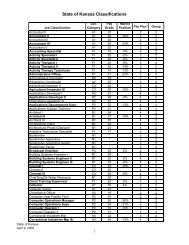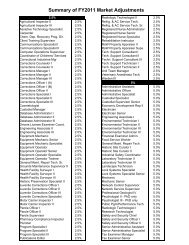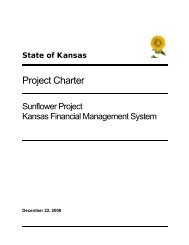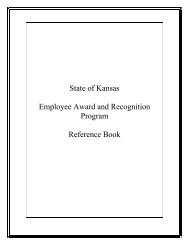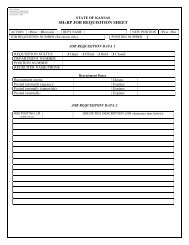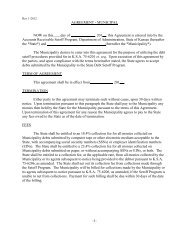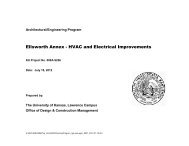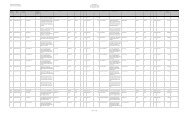Policy 7230A - Department of Administration
Policy 7230A - Department of Administration
Policy 7230A - Department of Administration
You also want an ePaper? Increase the reach of your titles
YUMPU automatically turns print PDFs into web optimized ePapers that Google loves.
5.1.3.a Change Documentation<br />
• An implementation plan that identifies the specific tasks to be<br />
executed prior to implementation, during implementation and<br />
subsequent to implementation.<br />
• A rollback plan that indicates the decision points at which<br />
rollback could be triggered and the tasks that will be used to<br />
return to pre-implementation status should the<br />
implementation fail.<br />
• An escalation plan that identifies the personnel to be<br />
contacted and appropriate contact information should a<br />
problem occur with the implementation that requires either<br />
deviation from the plan or the triggering <strong>of</strong> the roll back plan.<br />
• A communications plan that identifies all communications<br />
checkpoints that exist during the implementation, the parties<br />
to be contacted and the individuals responsible for<br />
establishing contact.<br />
5.1.3.b Impact Assessment Scheme<br />
• Identify risks associated with the change or with any <strong>of</strong> the<br />
components <strong>of</strong> the change.<br />
o Identify systems that are dependent on the system<br />
undergoing change.<br />
o Identify systems that are dependent on the personnel<br />
performing the change.<br />
o Identify systems that share maintenance windows (and<br />
may not be able to be maintained) with the system<br />
undergoing change.<br />
• Determine risk factor by establishing the likelihood <strong>of</strong> the risk<br />
occurred versus the impact <strong>of</strong> the risk should it occur.<br />
o Very High risk constitutes high likelihood and high<br />
impact. Risks <strong>of</strong> this nature must be mitigated.<br />
o High risk constitutes high likelihood and medium<br />
impact or medium likelihood and high impact. Risks <strong>of</strong><br />
this nature have a strong need for mitigation and are<br />
unlikely to be accepted.<br />
o Medium risk constitutes high likelihood and low<br />
impact, low likelihood and high impact or medium<br />
likelihood and medium impact. Risks <strong>of</strong> this nature<br />
have a moderate need for mitigation and may be<br />
accepted.<br />
o Low risk constitutes medium likelihood and low impact<br />
or low likelihood and medium impact. Risks <strong>of</strong> this<br />
nature have a low need for mitigation and are likely to<br />
be accepted.<br />
12



